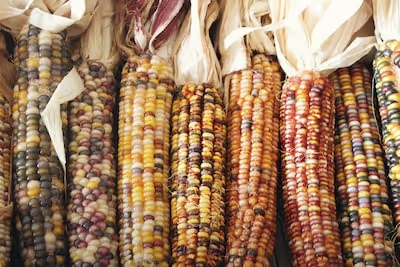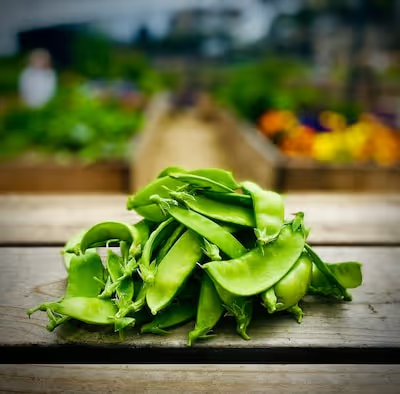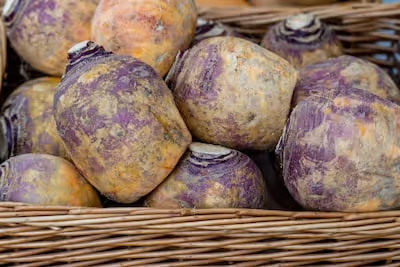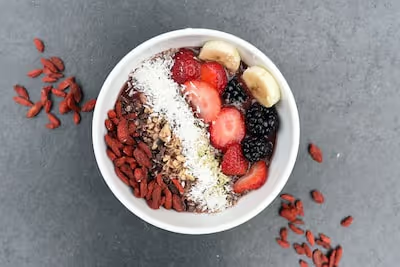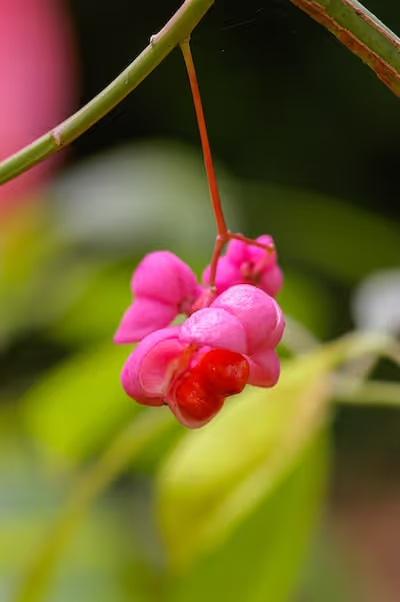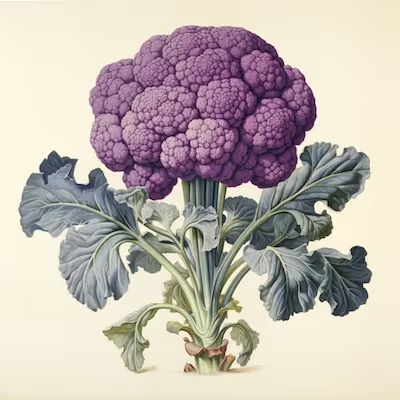Growing Konjac: A Gardener's Guide to a Striking Tropical Plant
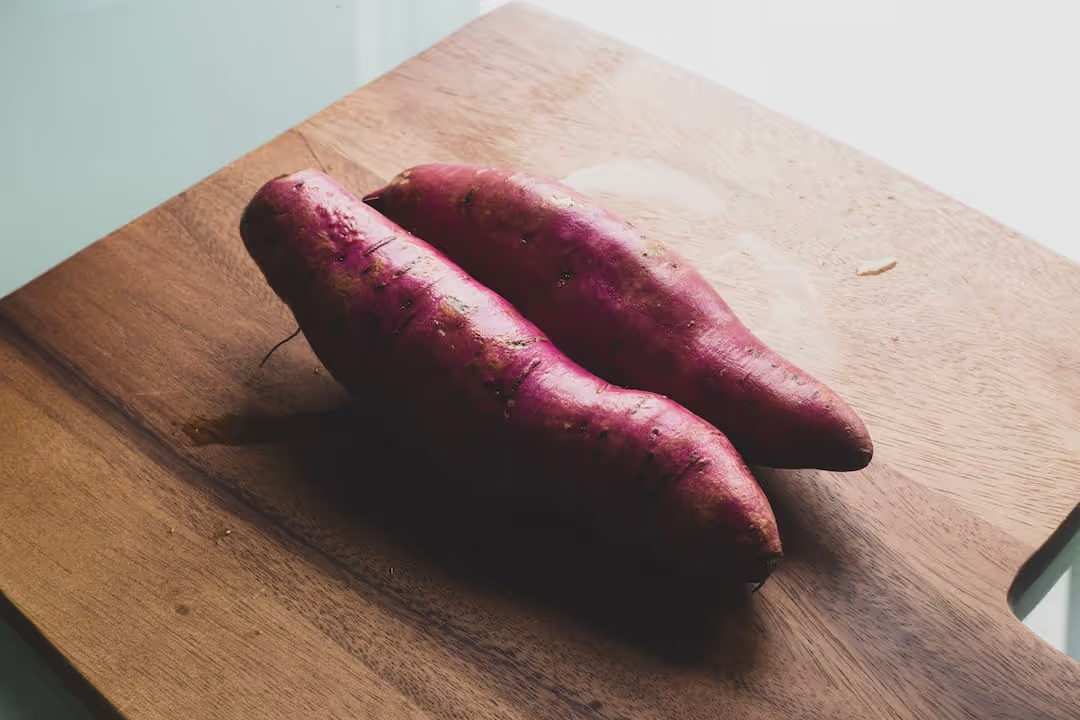
Growing Konjac
Growing konjac starts with sourcing healthy corms and planting them in rich, well-draining soil. To master growing konjac, place them in partial shade and water regularly without drowning the plant. Because they're frost-sensitive, bring konjac indoors if your winters bite hard. Once thriving, konjac rewards growers with striking foliage and intriguing blooms, plus a superb edible corm known across Asia for making noodles and jellies. Here's how to turn your garden into a konjac-friendly haven.
Cheatsheet: Konjac Cultivation & Care Guide
🌱 Site & Soil
Light: Filtered sun or dappled shade.
Soil: Loose, rich, well-drained; pH 6.0–7.0.
Heavy clay stunts tuber growth.
🌡️ Planting & Temperature
Plant: After last frost, soil above 60°F/16°C.
Depth: 4–8 in (10–20 cm) deep, eyes up.
Spacing: 24–36 in (60–90 cm) apart.
Growth slows below 50°F/10°C.
💧 Water & Feed
Keep soil consistently moist; never soggy.
Fertilize monthly: 10-10-10 NPK or compost tea.
🌿 Growth & Harvest
Stems reach 4–6 ft (1.2–1.8 m). Dormancy in fall.
Harvest tubers after foliage dies, 8–9 months after planting.
Yield: One 2–6 lb (1–3 kg) tuber per plant, per season.
Tubers last up to 8 months stored cool & dry.
🍚 Use & Benefits
- Source of glucomannan (dietary fiber, zero net carbs).
- Staple for low calorie, gluten-free noodles (shirataki).
- Supports self-sufficiency: grows in large pots for patios.
🛠️ Tools and Products You'll Need
- Shovel/trowel
- Konjac tuber (corm)
- Compost or balanced fertilizer
- Mulch for moisture retention
- Well-draining, large container (if pot-growing)
- Gloves (for skin protection)
🗹 Step-by-Step
- Prep soil or large container with fertile, loose mix, pH 6.0–7.0.
- Plant tuber 4–8 in (10–20 cm) deep, eye facing up, after all frost risk passes.
- Water deeply once, keep soil moist but not soggy throughout summer.
- Fertilize monthly with balanced or organic feed.
- Remove faded leaves in fall; dig tuber after foliage dies.
- Cure tubers in shade, store at 50–60°F (10–16°C).
⚠️ Tips & Warnings
- Flowers emit strong odor for 1–2 days—grow away from entries.
- Raw tubers are toxic—cook before use.
- Wear gloves; oxalate crystals can irritate skin.
-
Growing Konjac: A Gardener’s Guide to a Striking Tropical Plant
I planted my first Amorphophallus konjac after a chef raved about konnyaku noodles, then the plant bloomed and the whole block learned new words. The flower stinks like week-old roadkill, lasts two days, and is absolutely worth it.
What you’re actually growing
Growing Konjac means raising a seasonally dormant, corm-forming aroid with one colossal, umbrella-like leaf per year. The petiole looks like a snake skin cane, mottled olive and cream, and the leaf can span 4 to 6 ft wide (1.2 to 1.8 m).
The inflorescence appears before the leaf in spring, a maroon spathe around a spadix that heats slightly to waft the odor that attracts flies. Then the plant settles into leafy photosynthesis the rest of the season.
Hardiness and climate
I grow it outdoors in summer and treat it like a tender bulb in winter. Gardeners report success in USDA zones 7 to 10 in ground with deep mulch, and zone 6b with sharp drainage and protection, while colder regions should lift and store the corms.
Ideal growing temps run 70 to 90 F (21 to 32 C) during active growth, with cooler nights. Below 55 F (13 C) the plant sulks and growth stalls.
Light and siting
Give bright dappled shade in hot climates, or morning sun and afternoon shade. In mild coastal zones I’ve run it in full sun with extra water and thicker mulch.
Soil that fattens corms
Konjac craves a loose, airy, humus-rich medium that drains fast yet holds moisture. I target pH 6.0 to 7.0.
- 40 percent fine pine bark or coco chips
- 30 percent composted leaf mold or high-quality compost
- 20 percent perlite or pumice
- 10 percent coarse sand, plus a handful of biochar
Mix in a slow-release fertilizer at planting, then top-dress midseason. Avoid heavy clay or constantly wet pockets to prevent rot.
Planting depth, spacing, and orientation
Set the corm with the growing point up and cover with 2 to 3 in (5 to 8 cm) of mix. I angle the depression so water sheds away from the central growing point.
Space 3 to 4 ft (0.9 to 1.2 m) from neighbors, since the leaf spreads wide and catches wind. Stake in gusty sites to spare the petiole.
Containers that work
A mature corm needs a stout pot, 15 to 25 gallons (57 to 95 liters), or bigger for show-stoppers. Use wide, squat containers that won’t tip, with multiple drainage holes and a coarse gravel layer at the base.
Water and feeding calendar
Do not water until the sprout is visible, then keep evenly moist like a wrung-out sponge. Soggy soil equals bacterial soft rot, so I water deeply and let the top inch (2.5 cm) dry before the next soak.
- Spring sprout: light feed with balanced 5-5-5 at half rate.
- Leaf expansion: step up to 3-1-4 or 2-1-3 ratio fertilizer to build corm mass.
- Midsummer: supplement with potassium sulfate for thicker corm skin.
- Late season: taper off feeding to cue dormancy.
Dormancy and storage
After the first frost or natural dieback, cut the petiole cleanly and lift the corm if you’re outside mild zones. Cure it for one week in a dry, airy spot at 65 F (18 C), then store at 45 to 60 F (7 to 15 C) in dry peat or pine shavings.
I check monthly and remove any offsets, then dust cut surfaces with sulfur. Any mushy spots get trimmed to clean tissue before dusting and drying again.
Flower management and the infamous smell
A mature corm often flowers before it leaves, sometimes at 3 to 5 lb (1.4 to 2.3 kg). If I want a bigger corm next year, I cut the bloom the day it opens to conserve energy.
“Missouri Botanical Garden notes the bloom emits an odor of rotting meat for one to two days, then fades quickly.”
Indoors, I set the blooming pot in a spare room for 48 hours with a fan and a cracked window. Outdoors, I let the flies have their party.
Propagation that actually works
Offsets, called cormlets, cluster at the base after a season of strong growth. I twist them off during storage and raise them in 4 to 6 in (10 to 15 cm) pots for two years before field duty.
Seed is possible with hand pollination, but seedlings vary wildly and take years to size up. For consistent plants, stick to offsets from known stock.
Pests, diseases, and fixes
- Slugs and snails chew petioles and leaf edges, so I ring pots with copper tape and use iron phosphate bait.
- Vine weevil grubs gnaw corms, especially in containers, so I deploy beneficial nematodes in spring and late summer.
- Spider mites show in dry heat, so I raise humidity and rinse foliage weekly.
- Bacterial soft rot strikes waterlogged corms, which is why I never water dormant bulbs and always use airy media.
Safety, edibility, and handling
Raw plant tissue contains calcium oxalate crystals that can irritate skin and mouths, so I wear gloves when cutting or dividing. The edible product is processed glucomannan from the corm used for noodles and gels, not something to eat raw.
“RHS flags a skin and stomach irritant warning for this plant, so handle sappy cuts with care and keep pets from chewing.”
Konjac gel candies have a choking risk for children according to food safety advisories, so I stick to well-known brands and formats. Garden side, that means labeling pots so curious guests don’t nibble things they shouldn’t.
Buying guide and cultivar notes
I source dormant corms from reputable bulb houses, specialty aroid nurseries, and plant society sales in late winter. Choose firm, heavy corms without soft spots or sour smells.
- Standard A. konjac: reliable, vigorous, with maroon spathe and mottled petiole.
- ‘Shattered Glass’ and other variegates: gorgeous but slower, best in bright shade and stable warmth.
- Large-grade corms cost more but flower sooner, while starter offsets are budget-friendly and build mass with patience.
Design and companion planting
I pair konjac with bold-foliage partners like hardy bananas, Colocasia, or gunnera for a primeval vibe. Underplant with ferns and heuchera to hide the bare soil and keep roots cool.
Practical tips I learned the hard way
- Plant slightly off-center in the pot to shed water away from the growing point.
- Rotate containers a quarter turn each week for a straighter petiole.
- Mulch 3 to 4 in (8 to 10 cm) thick to buffer soil temps and reduce watering.
- Don’t fertilize until the leaf unfurls, or you’ll feed soil microbes instead of the plant.
Comparisons and worthy alternatives
- Dracunculus vulgaris (dragon arum): hardier in the ground and easier through winter, smaller stature and a shorter stink window.
- Sauromatum venosum (voodoo lily): can flower from a dry tuber on a counter, then leaf out in shade gardens with minimal fuss.
- Amorphophallus bulbifer: makes bulbils along the leaf for rapid increase, less cold tolerant but fast in pots.
- Amorphophallus paeoniifolius (elephant foot yam): a food crop in South and Southeast Asia, larger scale but warmth-loving.
Season-by-season care snapshot
- Late winter: pot or plant corms shallow, keep barely moist until sprouting.
- Spring: ramp water and feed as the leaf expands, stake if windy.
- Summer: steady moisture and potassium-forward feeding, watch for mites and slugs.
- Autumn: stop feeding, reduce water, lift after dieback in cold regions.
- Winter: store dry and cool, inspect monthly, divide offsets.
FAQ quick hits
- Will it survive frost in ground? In mild zones with deep mulch and drainage, yes, though I still hedge with a backup in a pot.
- Why no leaf this year? Often the corm flowered and spent itself, or storage ran too cold or wet, so check firmness and reset care.
- Can I force a bloom indoors? Yes, keep a large, dormant corm warm and dry in late winter and it may flower before any leaf growth.
- How big can the corm get? With rich feeding and space, well-grown corms can exceed 10 lb (4.5 kg) in a few seasons.
- Is konjac safe for pets? The raw plant can irritate mouths and stomachs, so prevent chewing and clean up any sap.
Field notes and trustworthy references
I lean on plant profiles from Missouri Botanical Garden and RHS for baseline culture and safety flags, then adjust to my climate. Kew’s Plants of the World Online helps with nomenclature and distribution.
“Royal Horticultural Society: handle with care, sap may irritate skin, and ingestion can cause discomfort.”
“Missouri Botanical Garden: the inflorescence emits a foul odor for a short period to attract pollinators, after which the plant produces a single large leaf.”
For storage and pathogen avoidance, I follow university extension advice on curing and dry storage for tender bulbs, which mirrors how I treat colocasia and canna. That simple shift to dry, cool storage cut my rot losses to near zero last winter.
Frequently Asked Questions About Growing Konjac Plants
What type of soil works best for konjac?
Konjac plants thrive in well-draining, fertile soil rich in organic matter. Incorporate compost or aged manure into your garden bed to maintain moisture retention without waterlogging the roots.
How much sunlight does konjac need?
While konjac can tolerate partial shade, it flourishes under bright, indirect sunlight. Aim for locations where your plants receive around 4 to 6 hours of gentle sunlight daily, avoiding intense midday rays.
What watering schedule suits konjac plants?
Regular moisture is beneficial, but avoid oversaturation. Water your konjac plant deeply once per week or when the first 2 inches (5 cm) of soil feels dry. During dormancy in colder months, significantly reduce watering.
At what temperatures does konjac grow best?
Konjac thrives between 60°F and 80°F (16°C to 27°C). Protect the plant from prolonged exposure below 50°F (10°C) to prevent chilling damage.
When should konjac plants be fertilized?
Feed konjac plants with a balanced, slow-release fertilizer in early spring as growth resumes. Apply an organic fertilizer high in phosphorus once or twice during the growing season to encourage healthy tuber development.
How do I protect konjac during winter?
In zones cooler than USDA hardiness zone 6, dig up the tubers in autumn and store them indoors in dry peat or sand at temperatures around 45°F to 55°F (7°C to 13°C). For warmer climates, a thick mulch layer over the dormant tuber provides sufficient protection outdoors.
Are konjac plants prone to pests or diseases?
Konjac is relatively resistant to pests but may occasionally experience fungal infections or rot in overly damp conditions. To prevent issues, ensure proper soil drainage and avoid overhead watering to keep foliage dry.
Growing Konjac isn’t for the impatient, but it rewards those who respect its rhythm. This plant asks for patience, a bit of faith, and well-drained soil. Give it space, shelter from the cold, and don’t drown it with attention—just the right touch of water and a watchful eye for rot. The payoff? A show-stopping bloom and a corm with culinary and cultural punch. If you’ve got a taste for the unusual, or you’re already growing other unique edibles like duck potato or schisandra vine, konjac fits right in. In the end, growing konjac is a lesson in patience and reward—a reminder that the best things in the garden don’t always come easy, but they’re worth every minute.
Homesteader's Perspective: Konjac for Food Security and Self-Reliance
Konjac's Nutritional Potential
- Fiber-rich tubers: Contain glucomannan, aiding digestion and satiety.
- Low-calorie staple: 100 grams (3.5 oz.) yields just 9 calories, ideal for health-conscious households.
- Mineral source: Supplies calcium, magnesium, and potassium for balanced nutrition.
Storage and Preservation Methods
- Long-term storage: Cure harvested konjac corms for 2–3 weeks at 70°F (21°C) in dry shade for extended shelf life.
- Dehydrating: Slice and dry konjac corms completely for shelf-stable storage up to one year.
- Powdering at home: Grind dried corm slices finely to produce multipurpose glucomannan flour.
Utilizing Konjac on the Homestead
- Culinary versatility: Thicken soups, stews, sauces, or create noodles, rice alternatives, and vegan gelatin substitutes from homemade konjac flour.
- Livestock feed additive: Use low levels of konjac powder to promote digestive health in poultry and rabbits.
- Natural skincare: Craft chemical-free konjac sponges at home by molding hydrated glucomannan gel and air-drying until firm.
Economic Advantages for Self-Sufficiency
- High yield: Mature plants produce corms up to 8 lbs (3.6 kg) per plant, maximizing garden efficiency.
- Easy propagation: Multiply stock annually by dividing offsets and replanting to sustain perpetual harvest.
- Minimal inputs: Low nutrient demands and pest resistance cut costs and effort, preserving homestead resources.
Find out which plants will thrive in your garden!
Answer a few fun questions and get custom plant recommendations perfect for your space. Let’s grow something amazing together!

start your season
